OffMap's Map to Camping Cuisine
On staying fed, finding ingredients and good meals on the road
Written by Anastasia Austin; edited by Douwe den Held
“We won’t be eating like this,” Douwe told me at least once a week as we prepared dinner in the months leading up to our trip South. A year before we set out, he’d made the mistake of gifting me Yotam Ottolenghi’s “Flavour: A Cookbook” for my birthday – a decision he regretted as it doubled the time I took to cook most dishes.
He was kind of right. In “Flavour” Ottolenghi calls for hours in the kitchen, carefully baking, sauteing, charring, or browning vegetables with patience and without crowding the pan. That’s not practical at camp: where fuel shortages or quickly dropping temperatures limit time spent outside the tent and at the camping stove.
And Douwe was kind of wrong too. So far, food has played an important role in our trip – both in the meals we have at camp and those we splurge on when particularly good food is available. It’s also one of the three main topics among the other cyclists we’ve met. Along with gear choices and … ehrm bowl health … cyclists spend a lot of time swapping recipes and restaurant tips.
In fact, one concept from Ottolenghi’s book has become central to our camp cooking: “flavour-bombs.” Flavour bombs are ingredients that pack a wallop – ones that can be added to a variety of dishes to bring a burst of flavor to the simplest dishes. They are a shortcut to adding depth and complexity to cooking with minimal effort.
For Ottolenghi, these are often exotic ingredients – miso, nut oils, black garlic – that are impossible to find cycling through South America, at least outside of its capitals.
So I’ve adapted the concept for cycle-touring: largely limiting the list of ingredients to those that can be found in each country’s most basic grocery stores (re-supply) and which can be used in recipes possible within the limits of camp cooking.
Finally, for when camp cooking inevitably gets boring, there are foodie’s paradises: towns or cities in each country where good restaurants and ingredients are particularly abundant.
Colombia
Colombians rave about Colombian food. Few others do.
But the truth is that almost everything grows here, and the hearty lunches found anywhere are a cyclist’s dream come true. The cuisine is meat-heavy, bean-heavy, and often deep-fried. Not for you? Try the excellent fruit juices or the soups. They make up for the carton-tasting corn arepas they come with.
Some dishes I will never understand: the intestine-filled mondongo, for instance. Others, like sancocho or cazuela de frijoles, I miss every day.
And then there is the coffee. While cheap tinto is nothing to write home about, there’s also an abundance of high-quality, specialized brews in some of the smallest towns.
Re-supply: D1
D1 is Colombia’s answer to Europe or the US’s Aldi or Lidl: no frills, but lots of good products and good prices. Not only can you find many of the same basics at much better prices than expensive supermarket chains like Carulla, Euro, Exito, you can also find ingredients that just aren’t sold in those stores (see below).
And D1 is so ubiquitous that, cycling through Colombia, it became a shorthand for a town of a decent size. The smallest towns in Colombia won’t have a D1 – these will be the same ones where finding fresh produce is hard. But beyond that, most towns – whether in the jungle or high in the mountains – will have a D1.
Aside from the flavour-bombs listed below, D1 carries nut mixes, frozen desserts, ok cheeses (the asaro is by far the best), and a decent selection of inexpensive wines (they’ll go at half the price of any other store in the country).
The catch is that many products are seasonal and can disappear without warning or increase exponentially in price. When I first moved to Colombia, D1 carried Rattlers (the German beer/lemonade mix) which first became hard to find and then impossible with no explanation. Another of my favorites, an Iberian cheese, first doubled, then tripled in price.
Still, it's often the only place to find great products and even as some products disappear, others appear. Just as we were leaving Colombia, a large, well-priced unsweetened greek yogurt appeared on D1’s shelves: something most health-conscious gringos living long-term in Colombia have spent years dreaming of.
“Flavour-bombs”
Sun-dried tomatoes (D1)
Capers (D1)
Queso para asar (D1) - “frying” cheese
Chocolate covered almonds (D1) – great for a treat or in your morning oats
Olives (D1)
Dry Adobe peppers (Envigado market only)
Good “artisanal” mayonnaise (La Vaquita, Carulla)
Textured vegetable “meat” (Carulla; Euro, Exito)
Coffee - compared to countries south, good coffee is easy to find and cheap (D1, local coffee plantations).
Recipes
Quinoa Salad:
Boil 300 ml of quinoa, set aside to cool
Chop red onion, tomato, sweet peppers, cucumber, avocado, and parsley. Mix into quinoa.
Cut a package of frying cheese into cubes and saute (in pan or pot) (note: oil is not necessary if your pan is non-stick and, in fact, can cause the cheese to burn. If your pan is not non-stick, use minimum fat). Mix into the rest of salad.
Dress with the juice of 1-2 limes or lemons and 1-2 tablespoons of olive oil. Salt to taste.
Tuna wraps
Chop 1 red onion; 1 green apple; 1-2 small fresh tomatoes (or, if you can get them 10-15 cherry tomatoes); 2-3 of the sundried tomatoes (from D1). Mix in a bowl (or camp cooking pot).
Add a can of tuna in oil
Add 1-2 spoonfuls of capers. Bonus: If there’s a descent vegetable stall around, you can also add a few basil leaves to the mix
Dress with mayonnaise and fill tortilla wraps (should make 4-5 large wraps)
Pasta with tuna and capers
Boil pasta to taste
Chop and saute red or white onion, garlic, zucchini or broccoli. Mix in with pasta
Add a can of tuna, two spoonfuls of capers, D1 sun-dried tomatoes, and parmesan cheese (available at most grocery stores, including D1)
Foodies’ Paradise : Medellin and Envigado
I’m sure I’m going to get flack for this from those who will say that Bogotá has a much better variety of food. Let me explain. Colombians are deeply patriotic to their region and I don’t know of any town or city around which all of my Colombian friends will rally as having “the best” cuisine.
To be honest, I struggle to believe that Medellín is the third best city for food in the world. Yet, while I’m sure the capital has better restaurants and the coast (Cartagena, for instance) better seafood, and Cali better bakeries, I don’t personally know where the gems are located in these places. In Medellín (and Envigado), I can be specific.
Most of Medellín’s high-cuisine restaurants are located in the posh El Poblado borough. There’s plenty of guides to identify the best of those. For more limited budgets we recommend:
For great Colombian food, including the paisa classics, sancocho and cazuela de frijoles; coastal fish dishes; and rolo Ajíaco, head over to Mezzón 55 with locations in Envigado and Moravia (and check out this interview with the founder and owner, Esperanza). For the meat-heavy bandeja paisa, a paisa specialty which includes beans cooked with pork, blood sausage, ground beef, crispy fried pork belly, and a fried egg, line up outside La gloria de Gloria in Envigado. Finally for Colombian fusion, check out La Casa del Alimento, in the borough of Laureles.
If you’re missing baked goods and good bread, I recommend Tres Trigos, which has locations all over town, delivers, and has great masa madre (sour dough) and dark, heavy, Germanic bread. For a bang-on curry, try Mekong in Poblado. For the best burger in a town that holds yearly competitions, head over to BGR Hamburgers (also Envigado). For a true, Italian slice give Pizzeria Antica Italia in Envigado a shot. And, if you’re looking for vegan options in a region that breathes and lives meat, make your way to Bianco Pizza in Envigado, where vegan and vegetarian pizzas are on offer and the “espinaca pizza” is to die for.
Finally, there are the markets. For a comprehensive education on the unique ingredients Colombia has to offer, a tour of the Mercado Mayorista is a must. Here you’ll taste and learn how to cook the country’s abundant fruits and veggies, including the uchuva, mamoncillo, feijoa, and chantadura.
And, for a less overwhelming experience, head over to the Envigado market. It’s smaller but still offers some hard-to-find ingredients to spice up your camping cuisine (beyond what you can find at D1). There you’ll find stalls that sell dry fruit, bulk grains like quinoa, and one – a big one in the middle of the market – that sells four types of dry peppers from giant burlap sacks, including jalapeño and adobe that bring another level of flavor to many dishes.




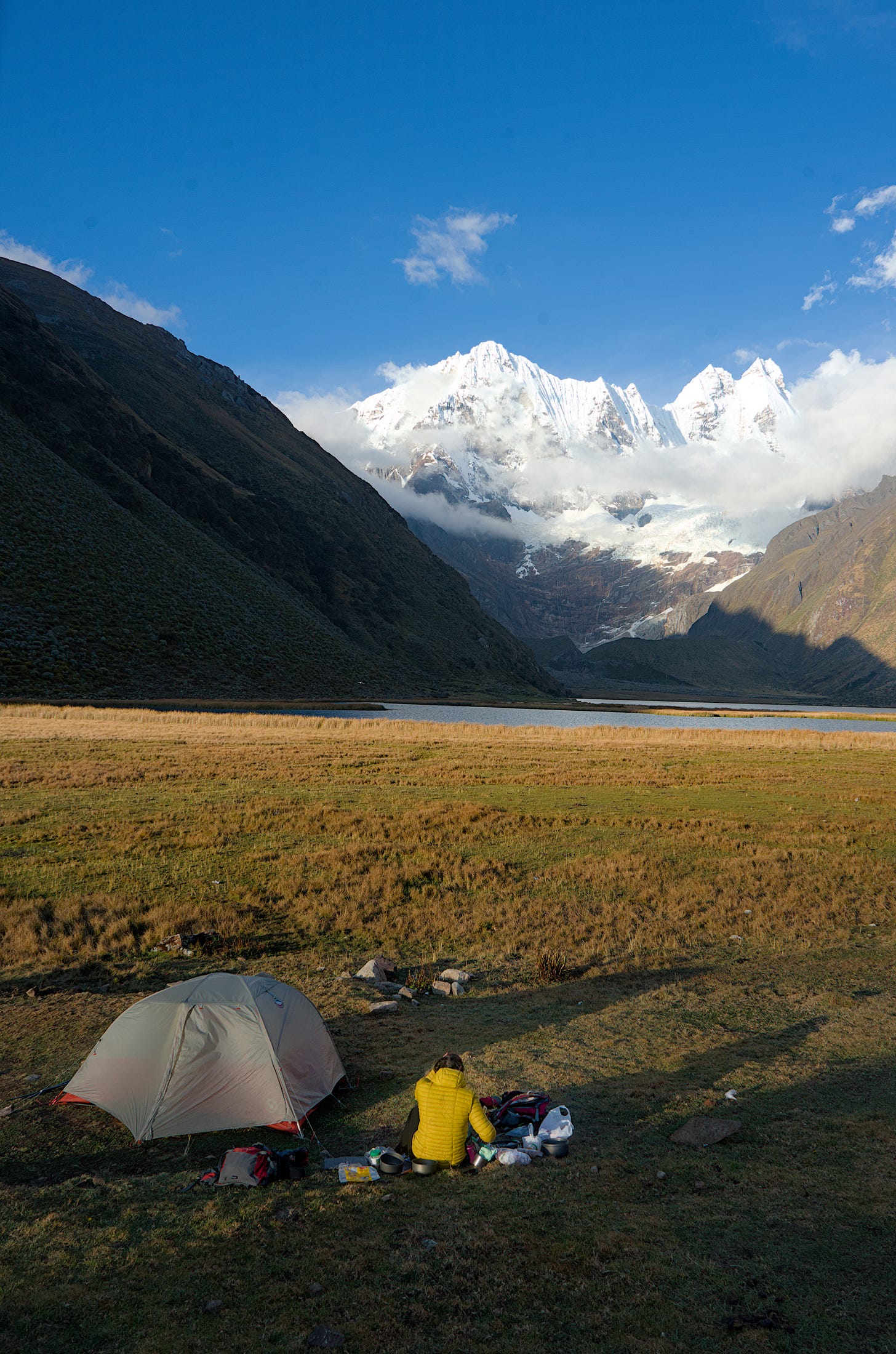
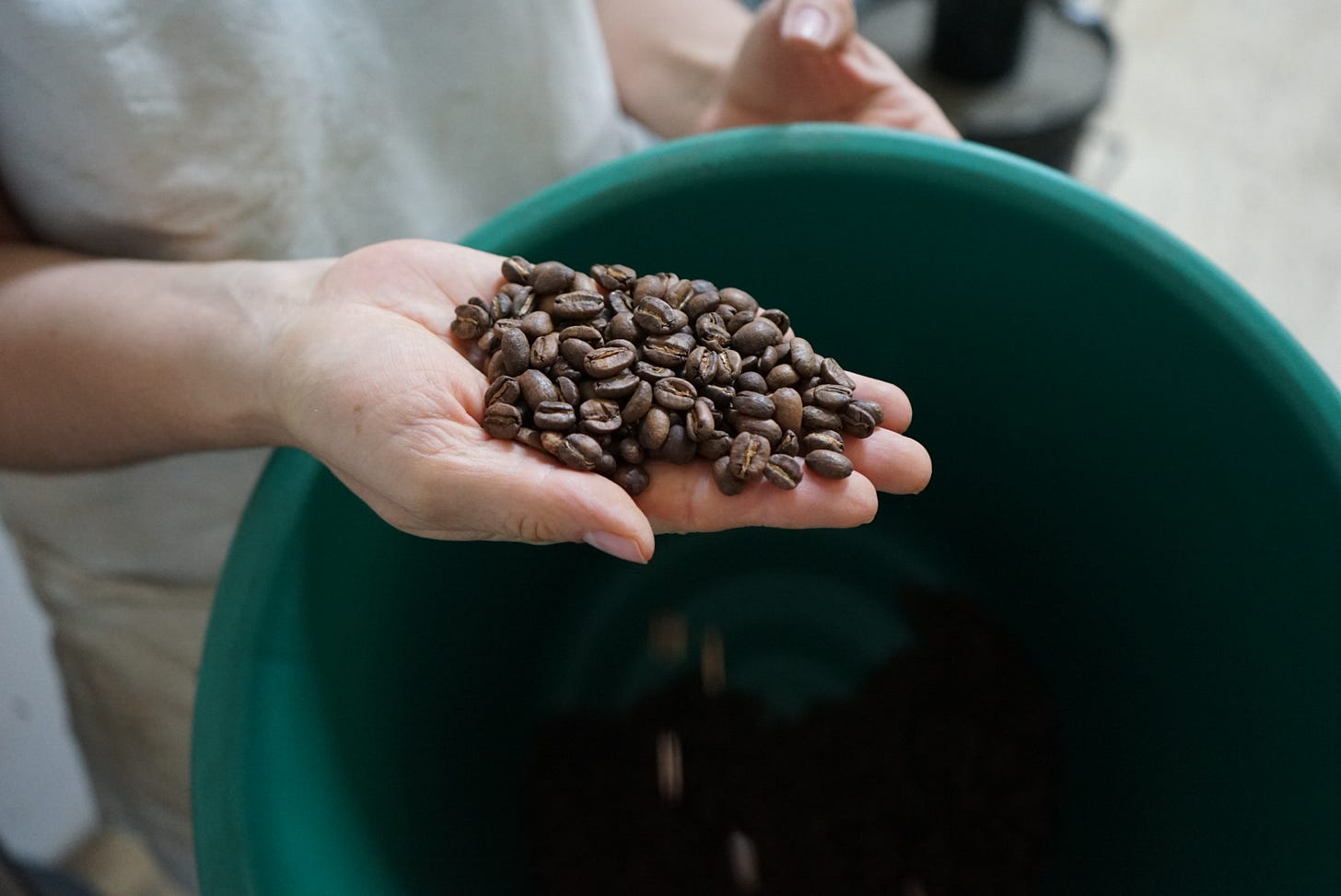
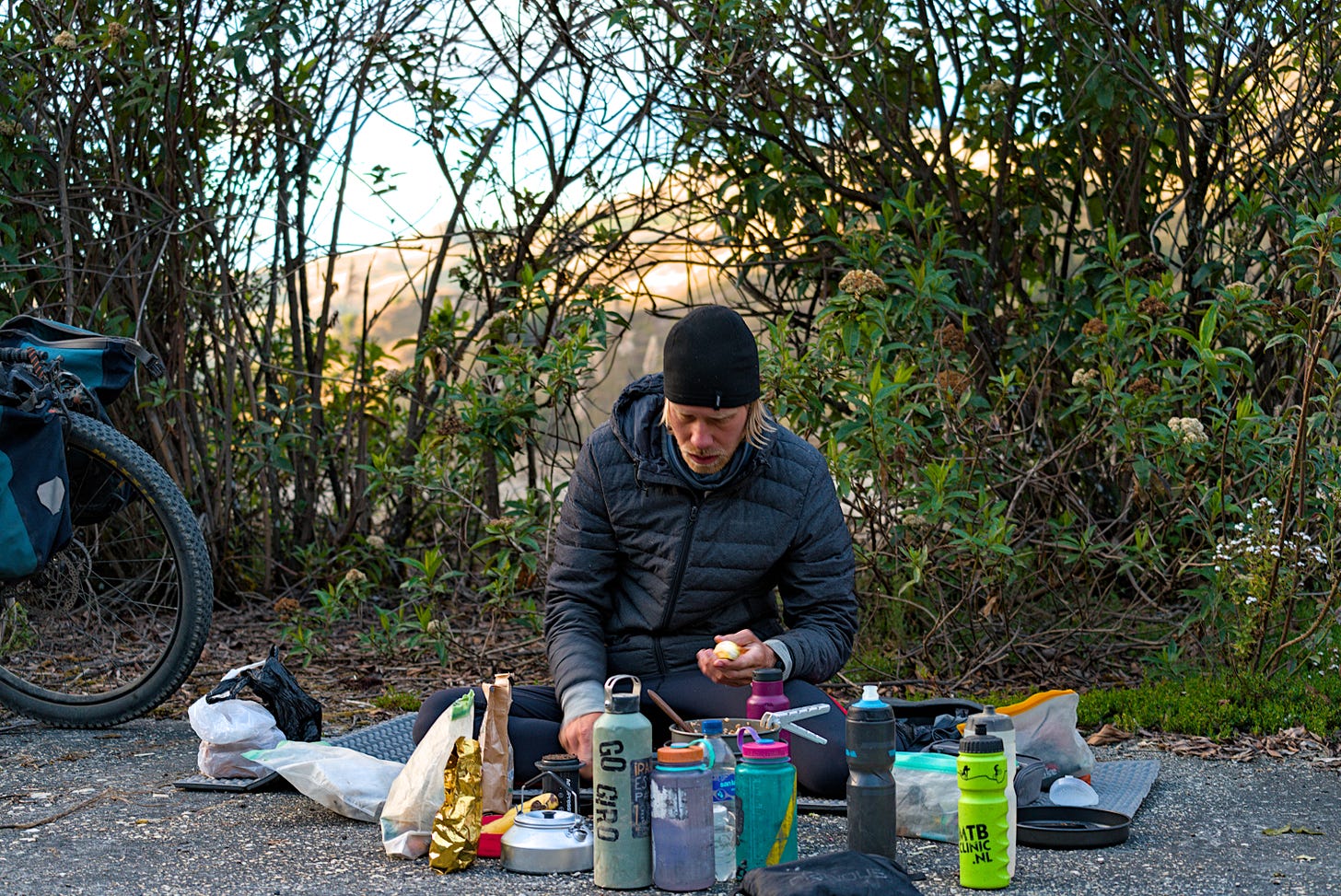
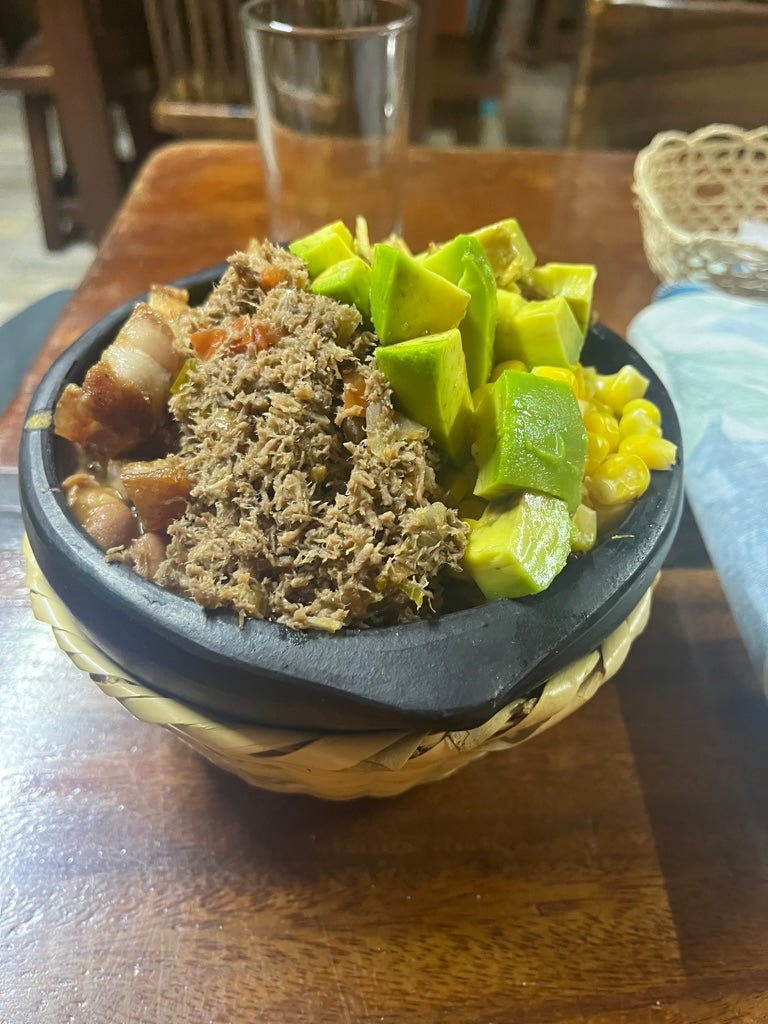
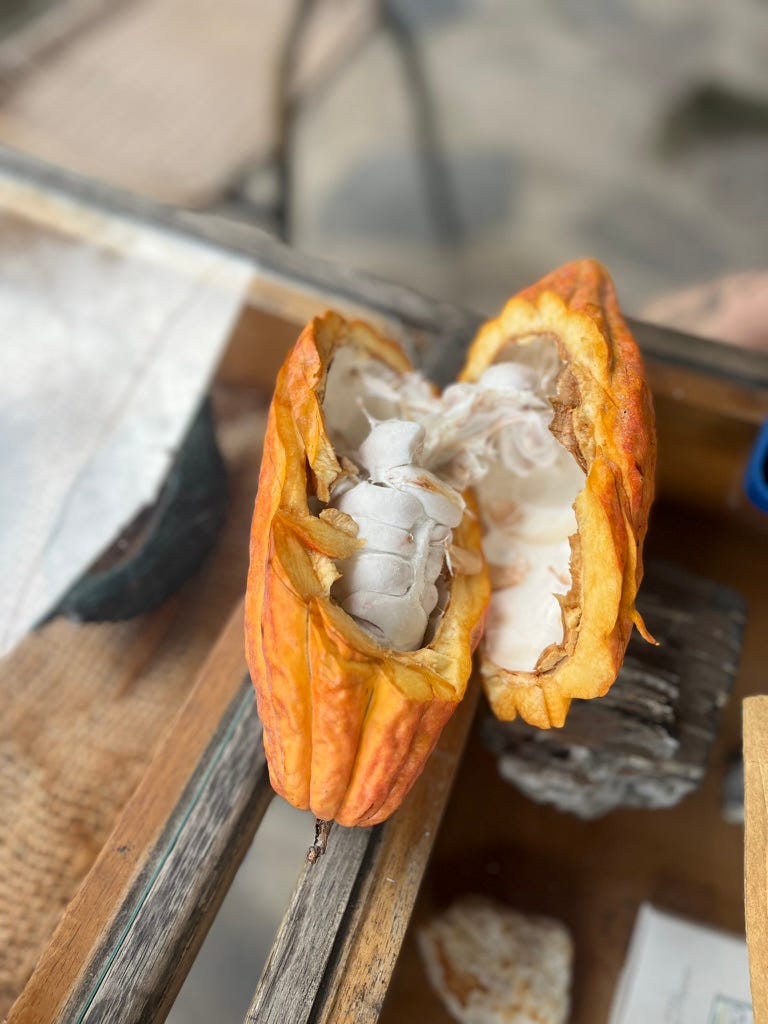
I go to try to make the quinoa salade sounds great
Enjoy the meal....😋